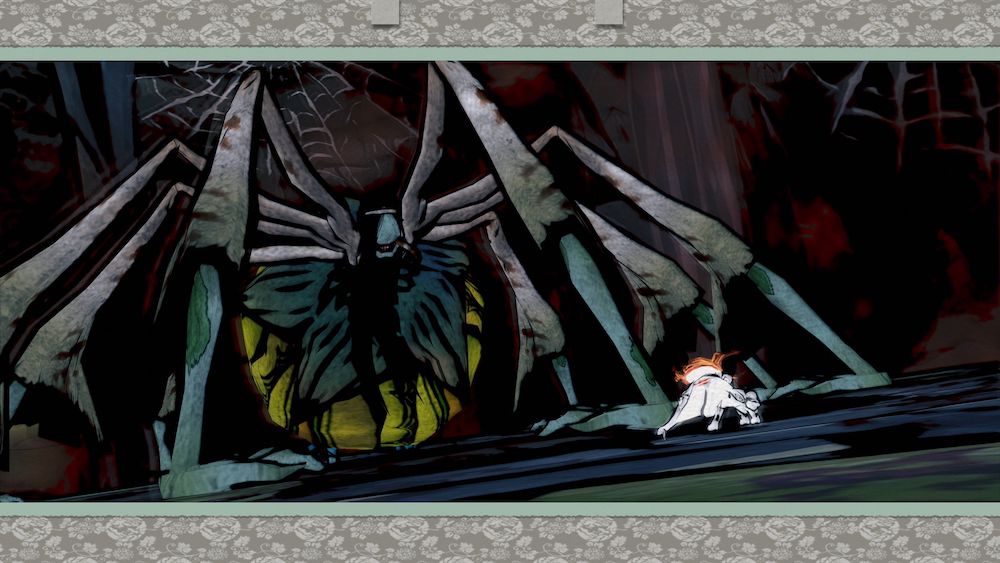
Despite being critically acclaimed upon release, Ōkami is a game which initially sold very poorly and even contributed to the closure of the now defunct Clover Studios. What’s impressive in all of this, however, is how the game continues to find new life despite its creators having long moved on to greener pastures. Ōkami first found it’s second wind with a re-release on the Wii, and then again on PS3 and Xbox 360 with a fantastic HD remaster – but its story doesn’t end there. Ōkami HD now seeks to grace current consoles with its timeless art style and charming story, and with stunning 4K resolutions and improved performance, there’s never been a better time to play or revisit this classic.
Ōkami’s narrative is set in Nippon, Japan, and is profoundly ingrained in the idea and lore of the ancient Japanese gods. A brief introduction narrates the events of how a white wolf and a swordsman fought a giant 8-headed serpent named Orochi, bringing peace to Nippon after his chaotic control. Years have passed since then, and some mysterious figure has broken Orochi’s seal, freeing the beast to wreak havoc on Nippon once again. You play as Ōkami Amaterasu, the Japanese Sun God in the form of a white wolf, and it’s your job to take down Orochi and see to it that he is sealed once again, preventing another age of chaos.

It’s a simple plot that’s well-executed, but Ōkami really shines when it comes to its cast of characters. They are all instantly likeable, charming, funny, and incredibly endearing. They never fail to make you laugh, and despite the lack of voice acting, the odd inaudible noises they make lead to them being even more likeable, weirdly enough. It’s not that the plot isn’t engaging, because, for the most part, it is. However, meeting some of the characters legitimately had me smiling at their quirks and personalities.
Ōkami’s gameplay loop is most comparable to the formula of The Legend of Zelda. After an initial tutorial area, you’re thrown into an open world and travel to numerous locations to achieve objectives. More often than not, these areas contain a dungeon and ultimately a boss fight that make use of the most recent brush technique you’ve acquired, but more on those later. There are also side quests peppered throughout the open world, collectables to hunt, and morsels of lore to be found through scrolls. These things alone make exploring Ōkami’s small but dense open world a joy, regardless of how many times you may have travelled through Nippon.
The dungeons are always fun to explore because of how unique and engaging they are when it comes to puzzle solving. One might have you trying to find ingredients for Orochi’s snack while another has you hunting for a demonic presence haunting the area. One of Ōkami’s main mechanics involves using a Legendary Brush to perform brush techniques. These range from utilising the elements, to creating bombs, and most of them can be used environmentally or in combat. As you explore the sub-weapons, you’ll find that there are a lot of areas you can’t access yet due to not having the correct brush technique, incentivising you to come back for the goodies later. This makes for an excellent sense of progression, and some really unique level design in the dungeons.

Combat is a standard hack-and-slash affair, with a variety of enemy types that need to be dealt with in specific ways. Aside from the weapons and sub-weapons you find on your journey, Brush Techniques are an integral mechanic in combat. You’ll need to utilise them to do massive damage, expose weak points, and, in some instances, make some enemies vulnerable. This creates a new level of engagement in the combat and keeps it from devolving into a “press square to win” experience. It’s thoroughly enjoyable, and the wide variety of weapons you have to pick from keep it feeling fresh.
Exploring and engaging in combat will also award you with items and resources that help Amaterasu in battle. Things like increasing how much ink you have for brush techniques, maximum health, and even the ability to resurrect if you fall in battle. The items you can find give you temporary but useful status buffs that are best saved for boss battles so you can deal out significant damage. There are a fair few bosses in the game, and they’re all excellent. Each one requires strategic thinking and problem-solving to figure out which brush techniques to use to prevail. It’s simple enough once you figure it out, but the satisfaction of finally working it out is immense.
More than anything perhaps, Ōkami is best known for its Japanese watercolor art style, and that’s for a damn good reason. Ōkami’s visuals are nothing short of unique and timeless. It never gets old to look at, and it’s no wonder why this game has been re-released as many times as it has. The 4K visuals in this latest version look stunning, and the game performs without a hiccup. It’s honestly still a real joy to take in, even if the textures look dated at this point. It’s just worth noting that this version is nearly identical to original remaster aside from the 4K upscaling, so if you’ve played Ōkami HD before, there isn’t a lot of incentive to pick this version up unless you want to experience it again.

Ōkami HD serves as proof that even among today’s trends, progression in an open-world game such as this one can be meaningful. The newly improved 4K resolution is just an added bonus that further demonstrates the game’s visual style will never get old, regardless of its obviously dated textures. In my opinion, it’s a near-perfect game, and one you should definitely experience if you haven’t already. It’s also one well worth revisiting, even if it’ll be your fifth time. The latest release of Ōkami HD might not provide much more for people who’ve played the remaster already, but when it’s priced so cheaply, it’s not much of an asking price.











